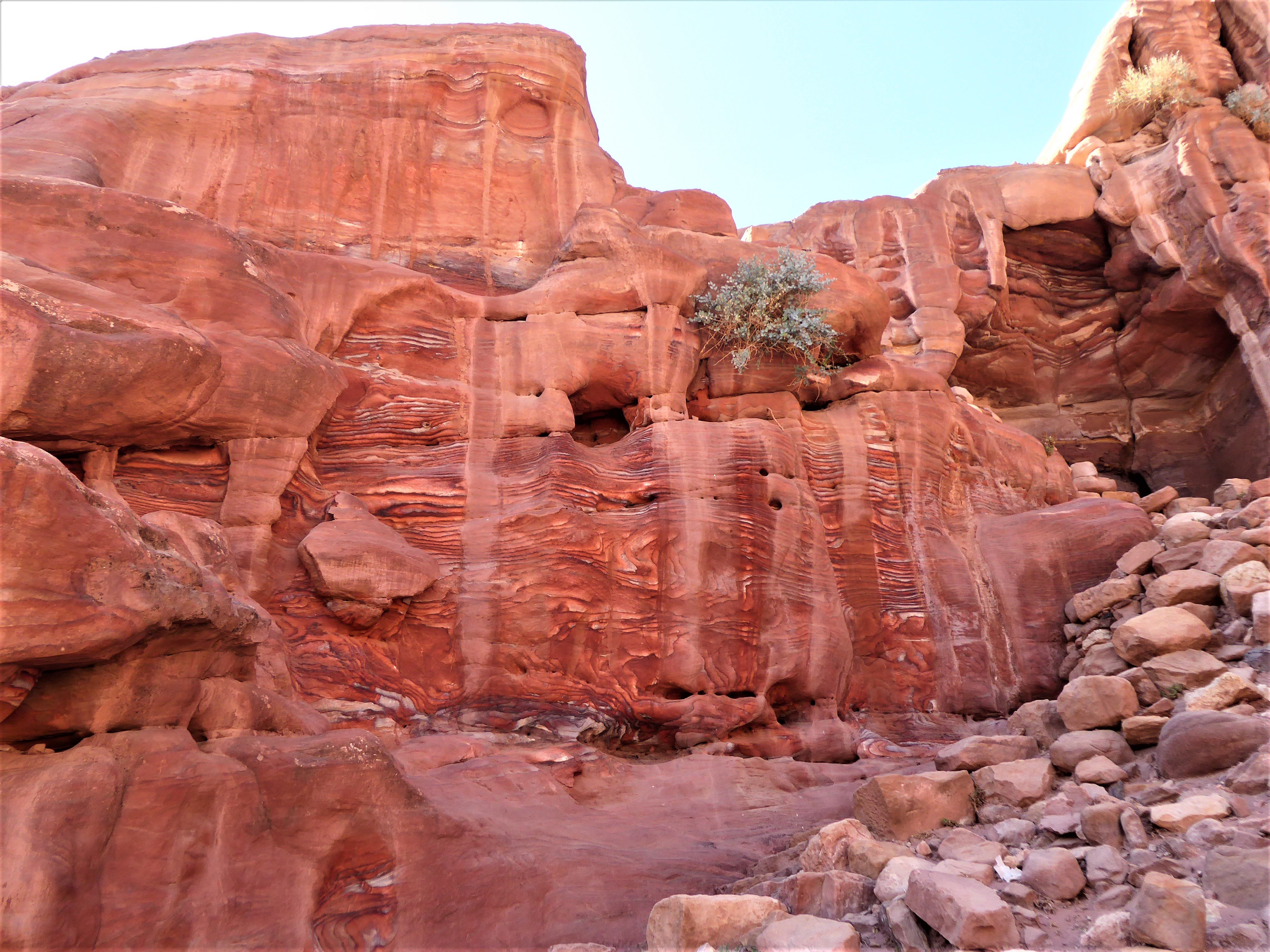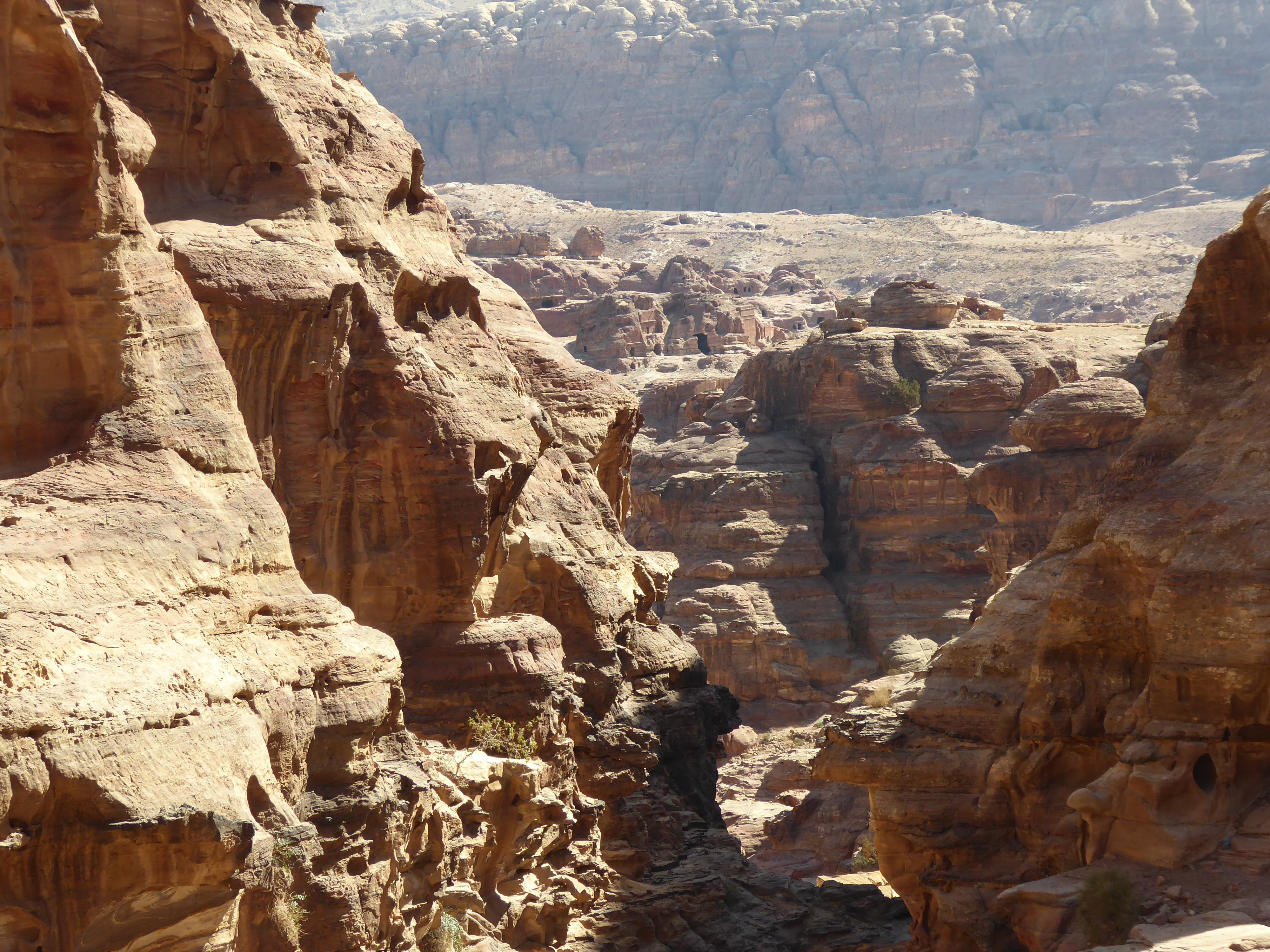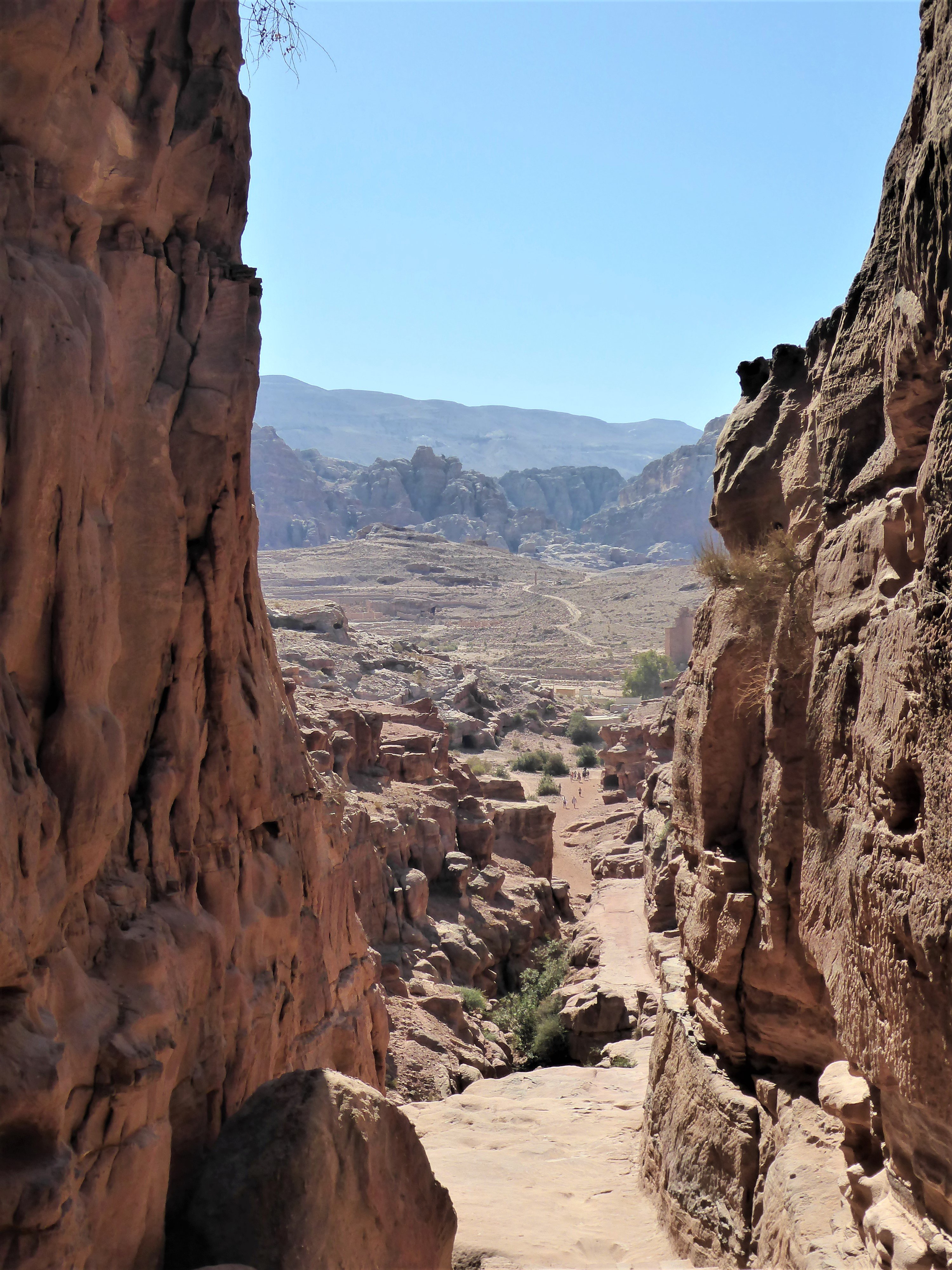The easiest way to explain how I visited Petra is by the main tourist map of the area; there are seven main walking routes each colour coded, some of the routes double up. The majority of people do the Main Trail (round trip is 8km) and add on the trail that leads to the Monastery (round trip 2.5km). The Main Trail is very easy and many people only do this especially if they are only there for a day, there is plenty see for a day. The alternative is to include the route to the Monastery. Why do many people not include the Monastery, well, that’s because of the near 1000 steps leading to it!
The other trails (all are round trips) Al-Khubtha 3.5km, Al-Madras 1.5km, High Place of Sacrifice 1.9km, Jabal Haroun 7.5km more for hiking and less for sightseeing as is the Sabra 10km; some people do the beginning of the last two, I did a mix match joining a few but did most. Now, back to where I left off on Part 1! Treasury ticket off my bucket list I doubt Petra could offer much more, it didn’t’, it offered heaps more! Frankly, the Treasury as spectacular as it is pales in comparison to some of the other structures in Petra, the Treasury just sets the scene for the rest your visit.
Street of Facades
Facing the Treasury, you walk right through a little Siq, 40-50m long, almost everywhere you look the mountain has been worked; there are stairs cut into the rock, some are high up the rock face and no longer reachable because they have been worn by time. This short Siq widens as you walk through, down the left-hand side is the Street of Facades; a succession of large tombs cut into the rock. Not as elaborate as the Treasury, that’s not to say they are I wasn’t astonished, they are impressive. Throughout Petra all the tombs are cut from top to bottom, the tombs along the Street of Facades are big and must have been a mammoth task to make them – considering how worn they are and the floor is in most places meters higher than what they were, these could only be tombs of the upper echelons of society.


Since my travels started I have been awed at what man achieved when money and determination are put to full force, Petra is a prime example of this, with the Treasury and Street of Facades just the preview of what I would see at Petra. One of the many things I like about Petra, trust me there are plenty, is the setting, a perfect stage created over millennia by nature and hundreds of years by man. Like a story staring off slowly with the entry road giving you hints and titbits of what may lie ahead, the Siq follows with it’s cool mysterious mystic mood, then, with a bang you get the Treasury which could be the crescendo, but oh no, that is left to the valley that opens up to the whole orchestra climaxing to a sensory overload! That may sound like an exaggeration, it’s not.
Sticking to what I did when, I followed the main path, my destination was the Monastery which is only a few kilometers but how the hell am I going to explain what I say, I don’t know. The path through the main valley is shouldered on both sides with red-brown rocky mountains; I would have describe it as a boulder type rock if it weren’t for the thousands of tombs and once was housing &/or shops &/or the centre of commerce for Petra. The rock-faces are not pockmarked, the entire landscape has been changed, think of how many houses would be needed to accommodate circa. 20k people (Petra at it’s peak), now replace all those houses with burrows cut into the mountain. The burrows/holes vary in size, some are similar to a double garage, others interlinked rooms etc. etc. just like a normal housing complex of today…. Except cut into the mountain.

Entering into the valley I couldn’t help but think of the cartoon The Flintstones. Between the mountains used to be a river, it still flows today during the rainy season if they have heavy rains. This area would have been the heart and soul of Petra’s civilisation, like the central business district. On the left is an amphitheatre cut into the mountain, it was constructed/made at a later date and cuts into some older tombs – I’ve purposefully not put the best of pictures of it in this post because the next day I climbed to the top of the opposite mountain where there is a fantastic view of it. Carrying on down looking left and right he mountain looks like a giant anthill with holes everywhere and on the right, I got a glimpse of the Royal Tombs perches higher up taking almost the whole length of the mountain face, amazing! I will be exploring them more the next day.
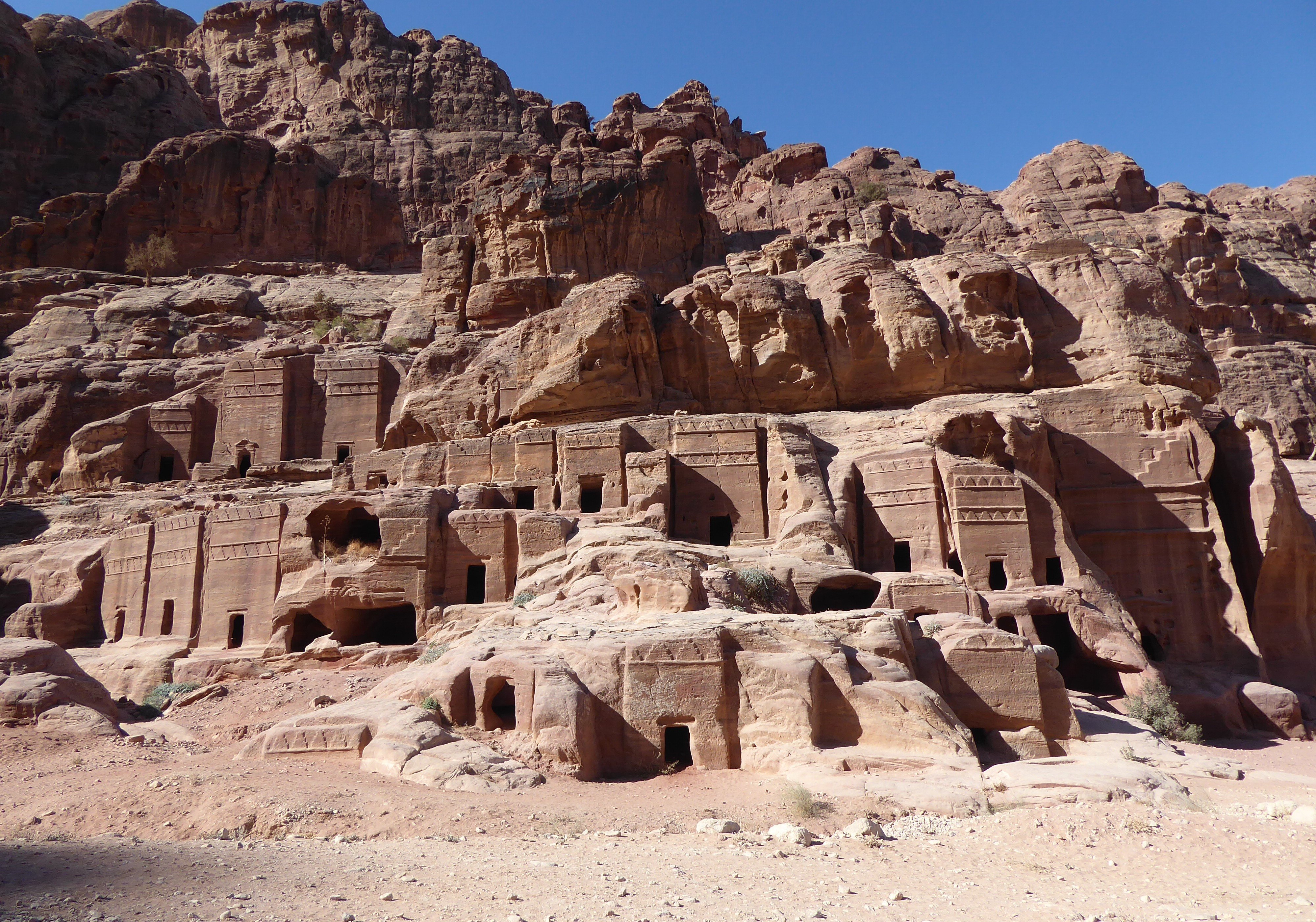
Colonnaded Street
You cannot miss when you hit the Colonnaded Street, from walking through thick sand that kicks up against your calves sliding back down into your shoes to a light coloured stoned road. The Road as it is looks Roman, and to a degree it is; it was part of the Nabataean road rebuilt and extended by the Romans near 100BC, it would have been 6m wide. During the Nabataean times this was where all the shops were, I would imagine it would have been like the markets of today packed with people buying who knows what from little stores lining each side of the road.
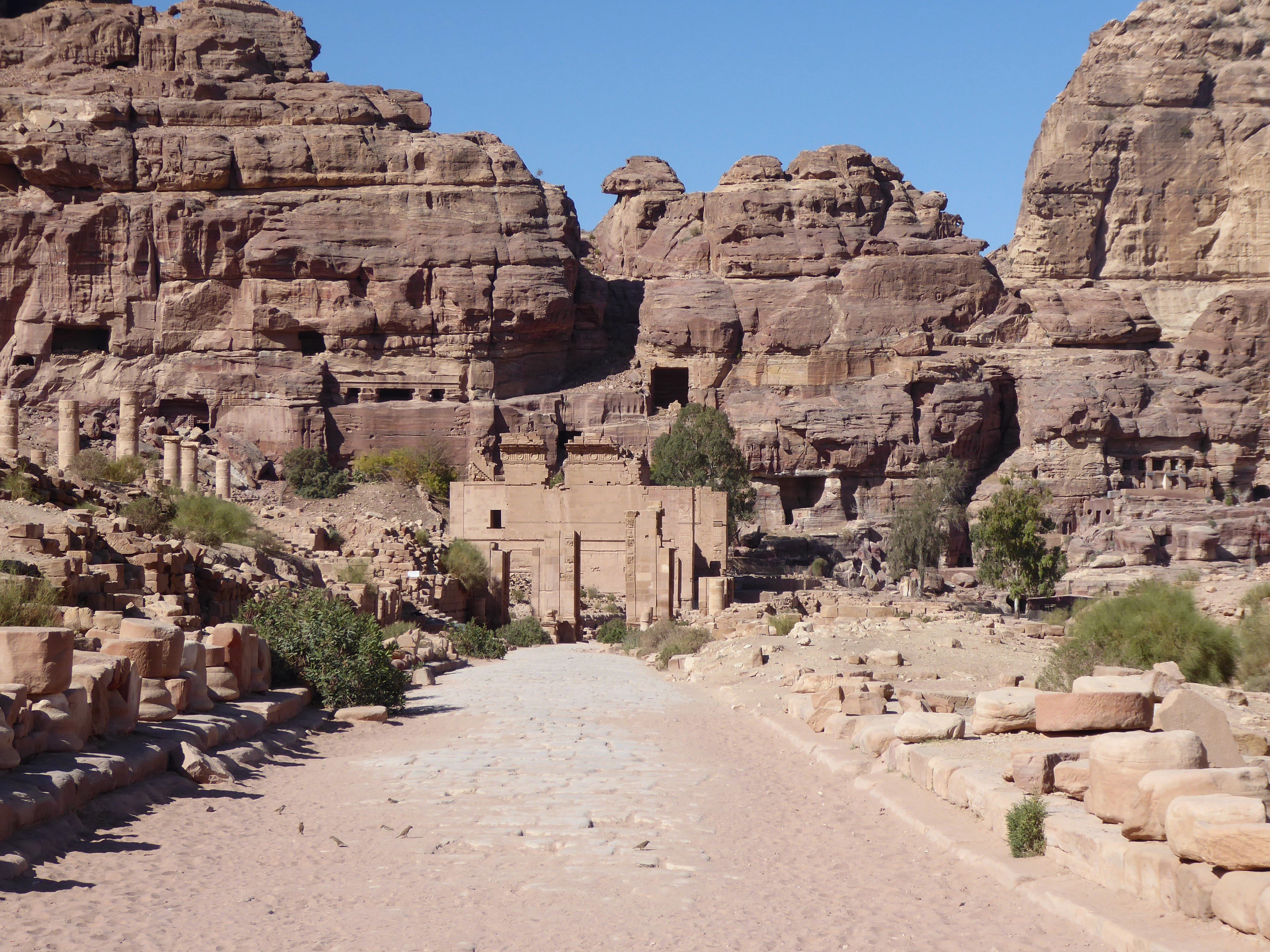
As time passed from the Locals to the Romans the latter did what they did wherever they conquered; assimilate and add their own touches too. On the left of the Colonnaded Street situated higher than the road on a little plateau are a few temples the biggest by far is the Great Temple Complex – I’ll add more to this on my next blog as I explored the temple in more depth another day. At the end of the Colonnaded Street is the Temple of Dushares / Qasr el-Bint, a large Roman Temple which would have been 23m high when finished, it was dedicated to the god Dhu-Shara/Dushara Restoration work started in the 50’s and been a stop start process still being worked on today. Coincidentally they were working on it whilst was there, most of the area even close to it was off-bounds so I couldn’t get a great view nor any nice pics – not even neat the 26 marble stairs leading to the entrance…would be nice to see how worn those stairs are!
The Monastery / Ad Deir
The destination for the extended Main Trail; if you keep following the main road you cannot miss it. Some people say there are 850 steps, some say near 1000, I think the latter may include all the steps right to the Monastery. There are donkey rides up and down to the Monastery which many people use, maybe the ride up wouldn’t be that bad, but the ride down must be uncomfortable not to mention hair-raising at times. The climb is not difficult, yes there are lots of stairs but there are many places to rest and buy a get a drink including a little restaurant right at the top opposite the monastery. I haven’t been able to get much information about The Monastery which is the translation of it’s Arabic name Ad Deir; built by the Nabataeans in the 1st Century AD, it is near 50m wide and 45m high, an extremely impressive structure without even mentioning how much of the mountain they cut away to made it!
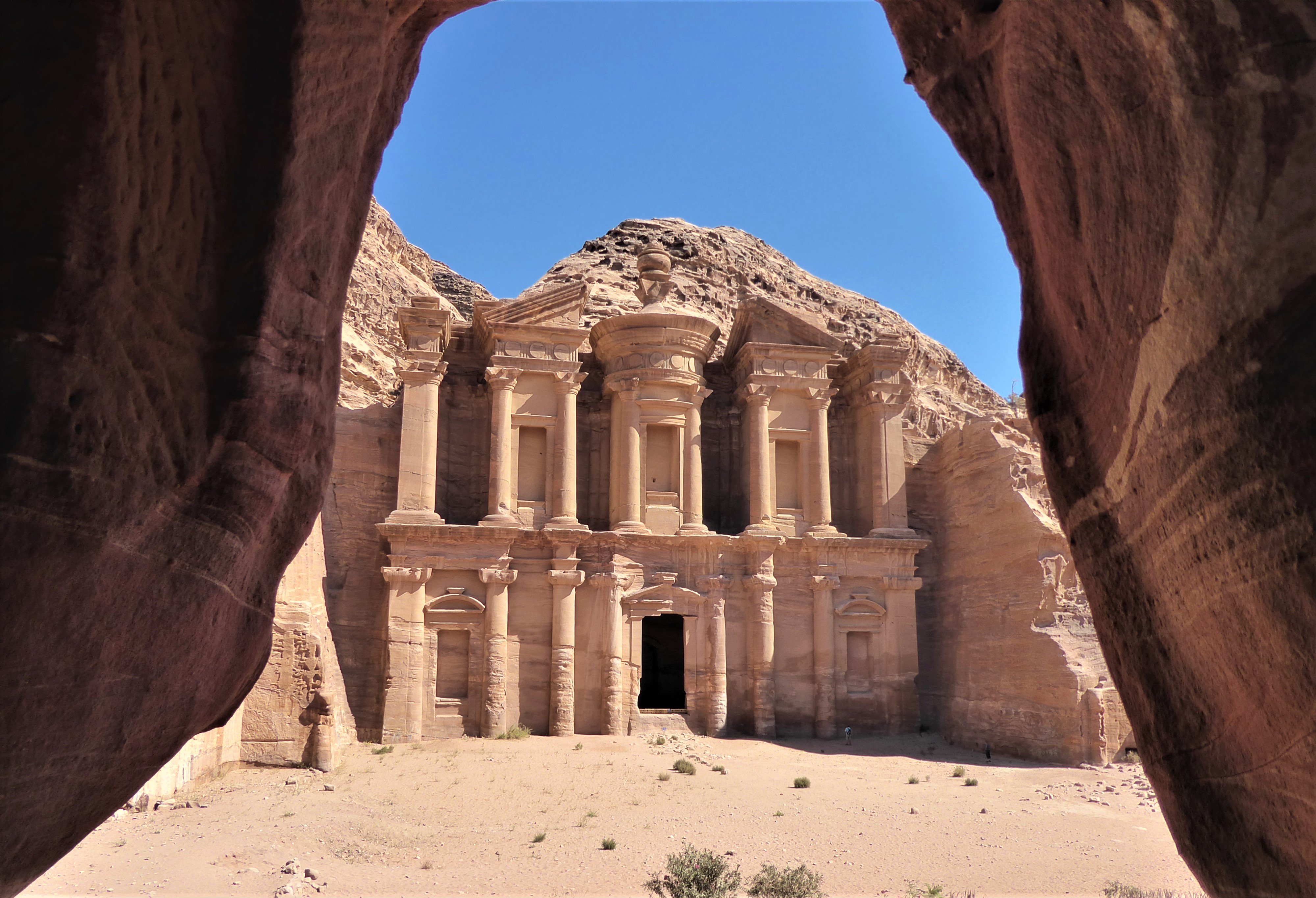
Issaam had said that I should go past The Monastery about another 500m max, glad I did, there are a few viewpoints just past The Monastery that give you awesome views of the valley beyond Petra; panoramic views ranging for gorges to desert – well worth the extra walk, I went to three different views, each with their own unique and beautiful views.
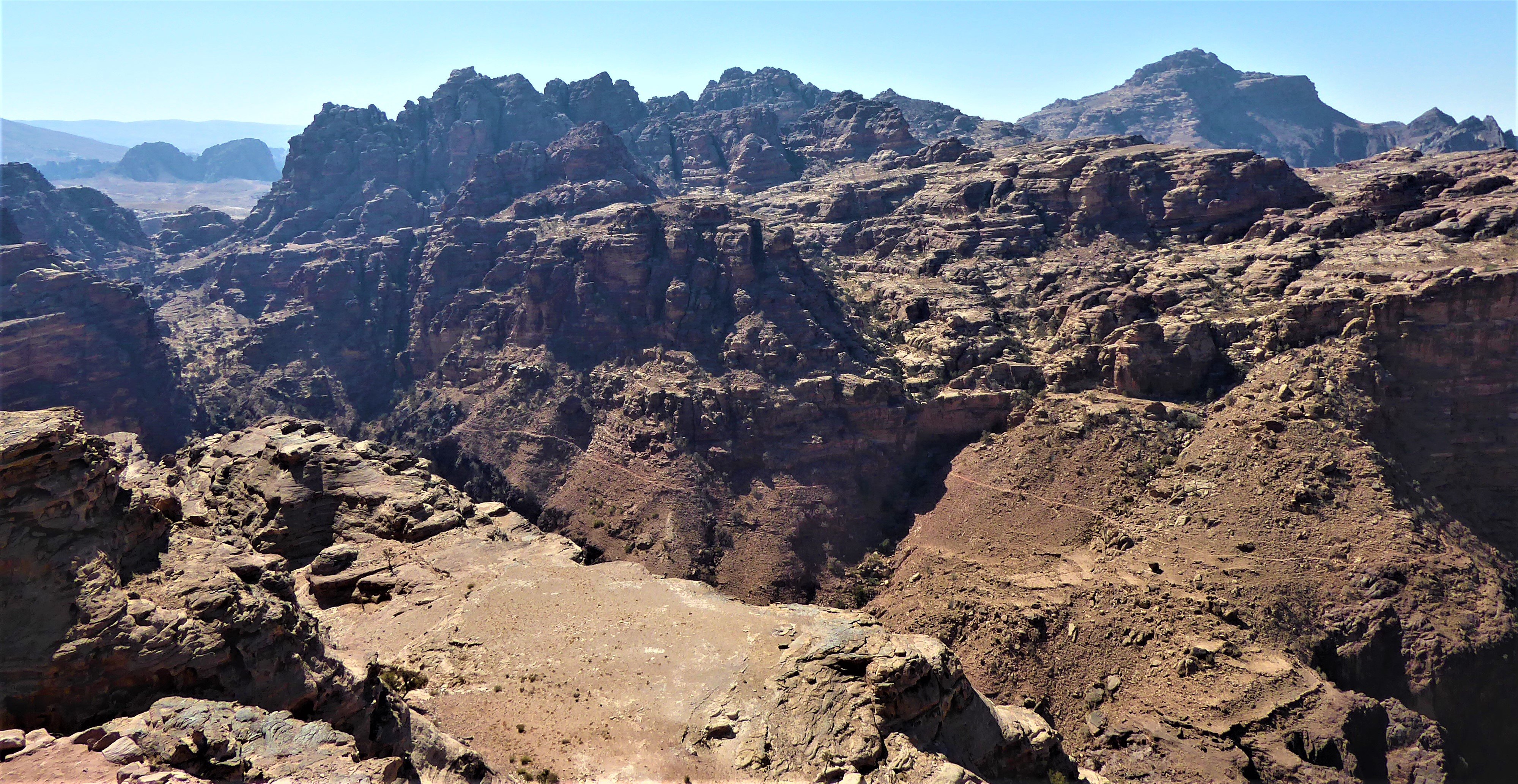
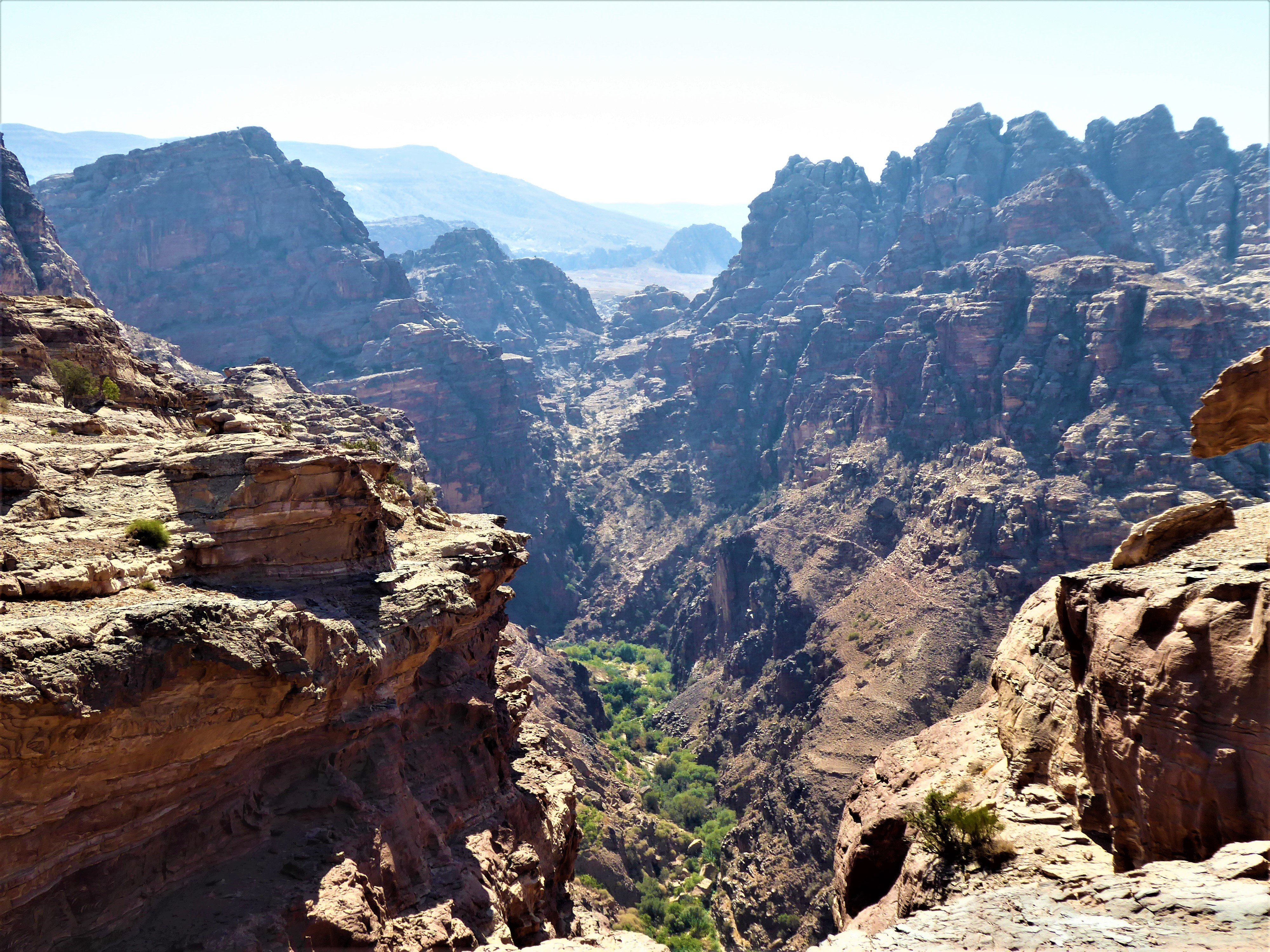
There are other structures in this area, plenty of holes cut into the mountain but I couldn’t find out what the structure is where now only stands the footprint/foundations of a building/s. Like most of Petra, it’s strange that such a massive area which played a pivotal role for trade has so little written about it or known about it. There is information about the Roman times but scant detailed information about the Nabataeans who created this environment.
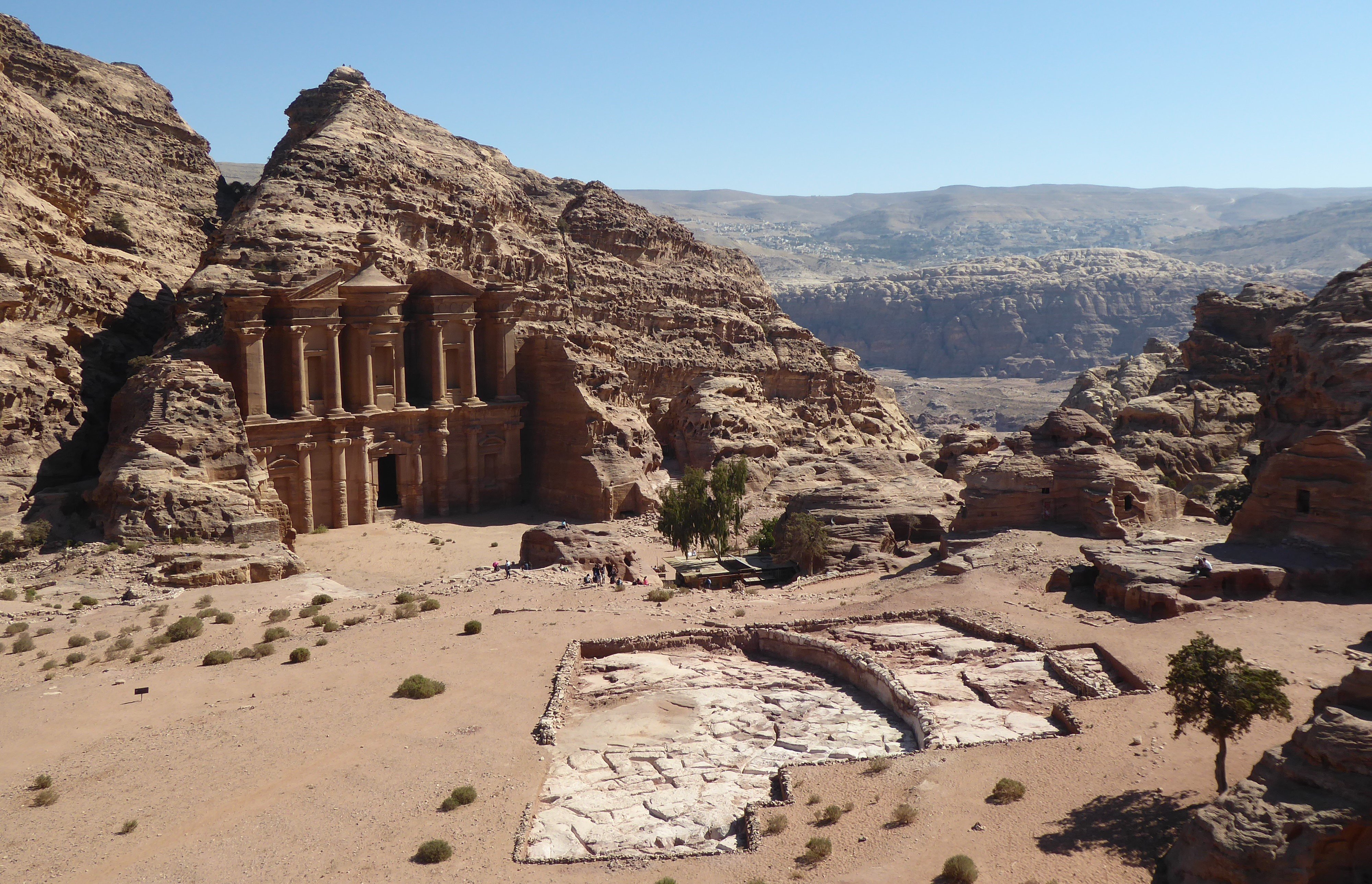
I headed back down the stepped footpath and when I got to the bottom it was only lunchtime, thanks Issaam for the lunch. Still having plenty of time at hand I decided to go walkabout. Sitting at the restaurant area there are some stair leading to what once was a museum against the opposite mountain, this path leads to behind and on top of the mountain. It’s a nice walk with great views of the area below, but if you carry on like I did you can explore the area quite extensively.
My route was a mix-match taking me up and around, I thought I may have been lost but I just carried on following footpaths. The path I took isn’t on the map, but it is definitely used as I ended up linking up with the High Place of Sacrifice Trail, before I did I climbed another little mountain leading to an old fort build by the Crusaders. The Crusader fort isn’t in great shape, the stairs, yes more stairs, leading to it are in good condition though but the nearer the top the wore they get…that’s not including crossing a wonky bridge built of old planks – don’t think I was meant to go past them. At the top of the mountain you get fantastic views not only of Petra but past areas less visited by tourist, the Petra the Nabataeans inhabited is vast! Far in the distance I could see many tombs, high on the mountain face, how they got there I have no idea. Getting there is one thing, but building the tombs there is just unbelievable! They were too far away to get nice pictures, I may take another look to see if I can use any of them.

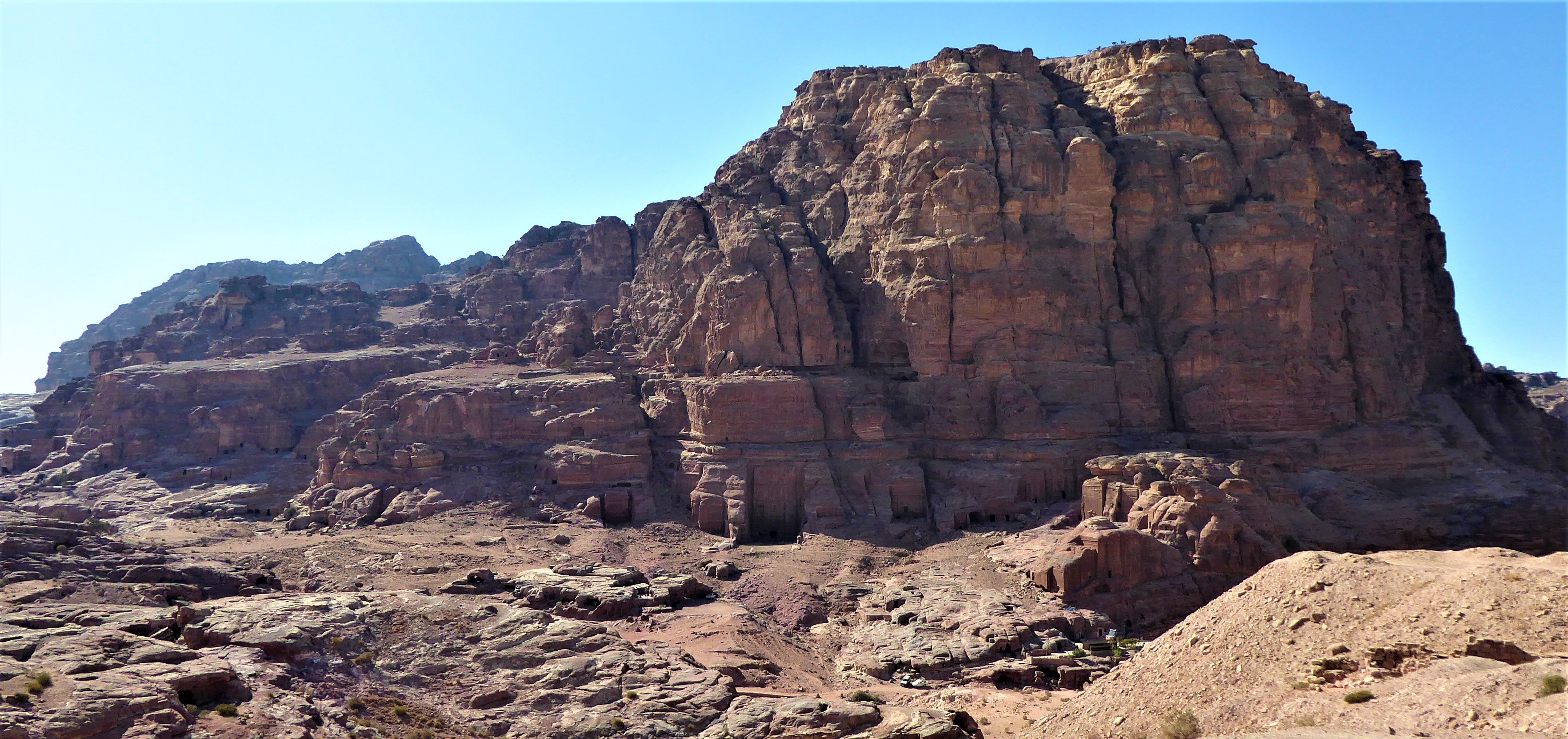
Not knowing were I was going I ended up about 200m behind the Great Temple, there was a path going right so I decided to follow it and somewhere along the path I ended up on the High Place of Sacrifice Trail…I didn’t know that at the time only realising it later.
Other than the Main Trail, the other trails are a combination of sightseeing and hiking, many if not most of the mountains can be summited relatively easily; this is done by stairs cut into the mountain, I think most of them are original the new additions are distinctly different. There are pro’s and con’s to these purpose-built stairs, pro’s are making places accessible, con’s are there are so many bloody stairs!
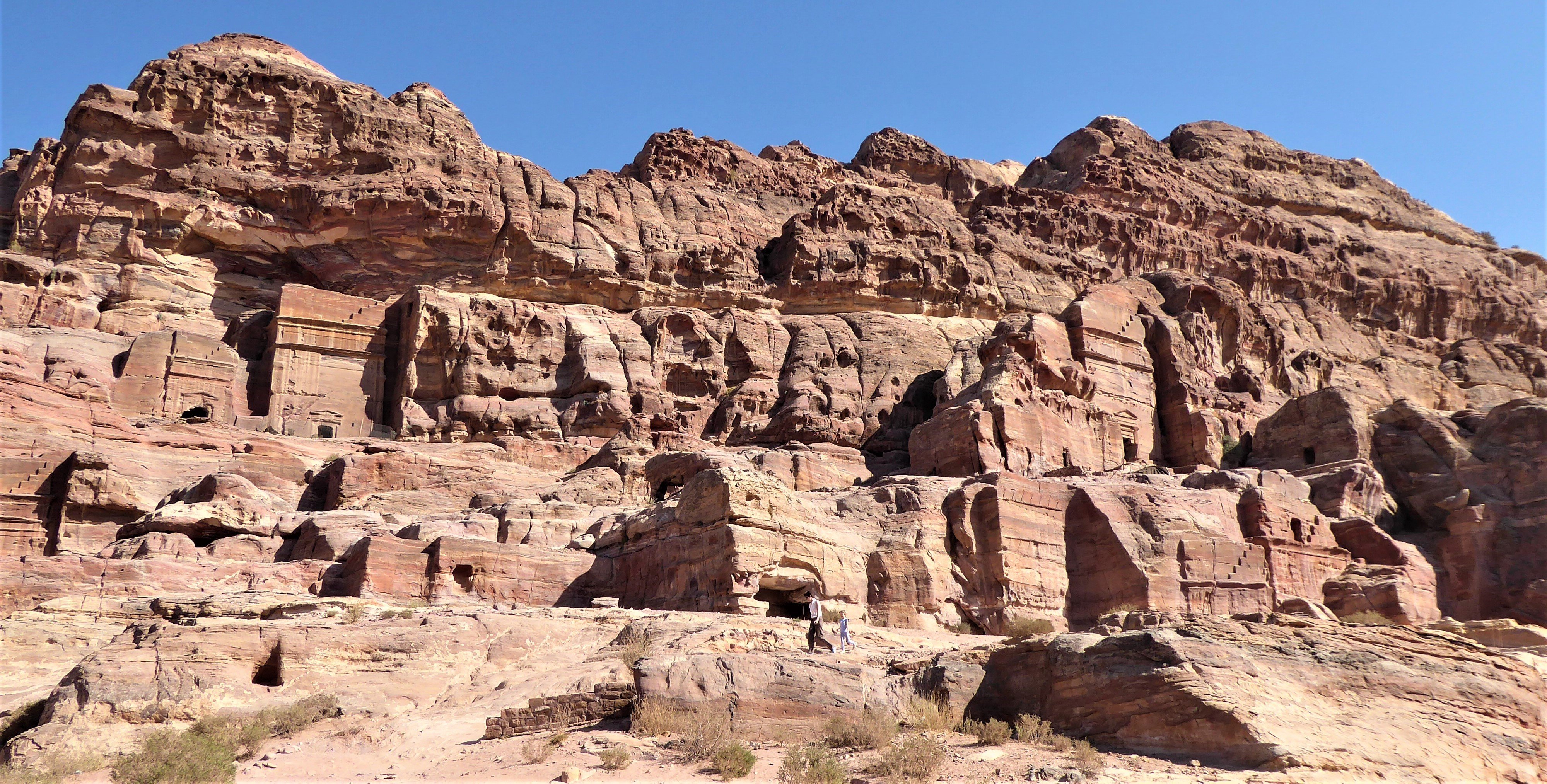
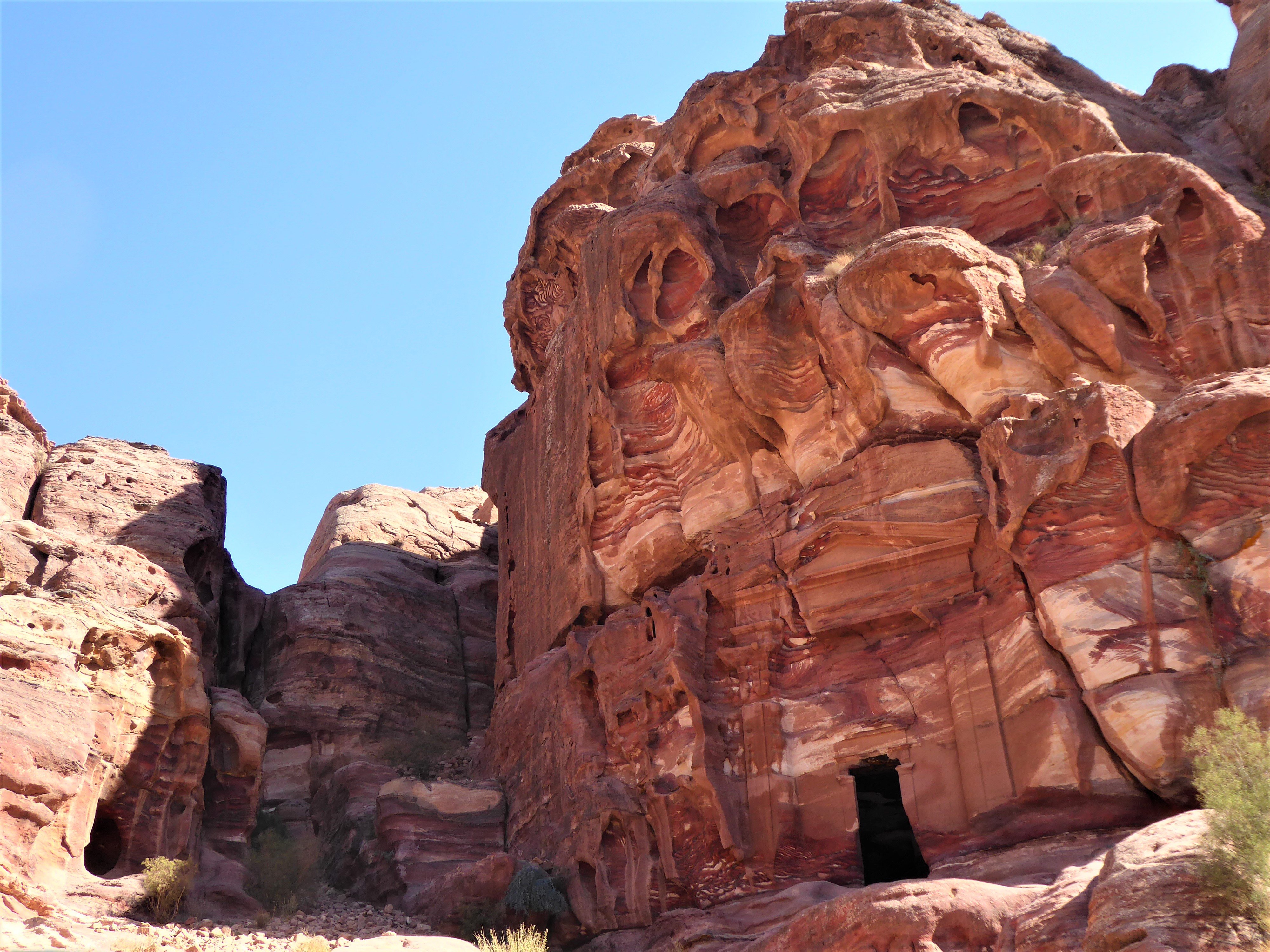
Along the route there are tombs throughout of every shape and size, from next to the path and in the distant horizon. Not far from where the stairs lead to the top of the mountain there are a cluster tombs slightly different to the others.
Crusader Tomb
I have no idea how accurate this is, but I’ll go with the explanation I was told. This is likely a reused tomb where some Crusaders were buried, this would have been more than a thousand years after it was built. The whole tomb has rectangular hold cut directly into the ground and would have been covered, some of the initial stone slates are still in situ, but I don’t know how accurate any of this is.

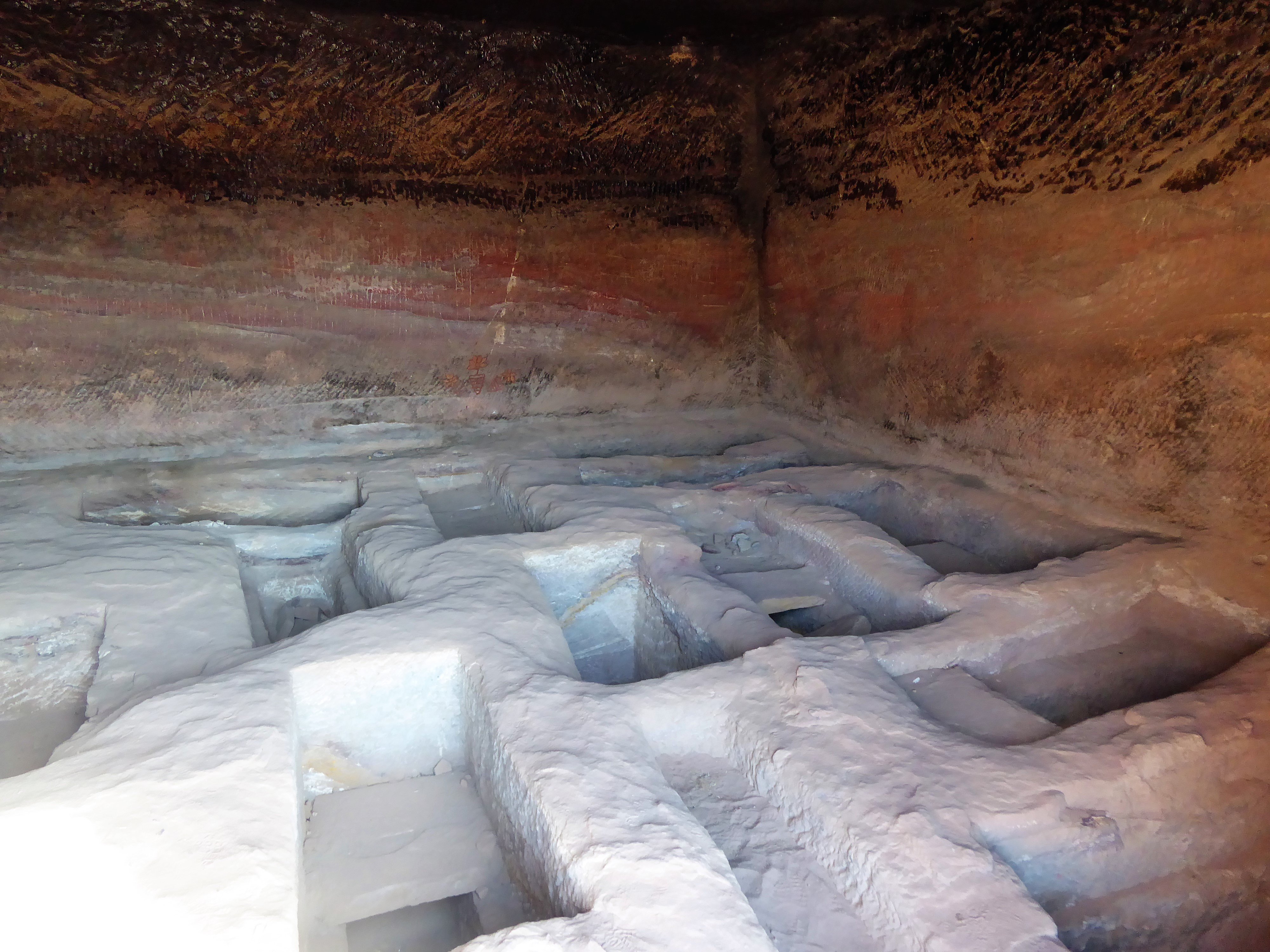
Garden Triclinium
Thought to be a Garden Temple some time ago this was changed to a Garden Triclinium in more resent times, however it seems that is was just in fact a Triclinium with no garden. I suppose the garden hypothesis came about because at the entrance there is a large water pool which is filled from water channelled from the top of the mountain.
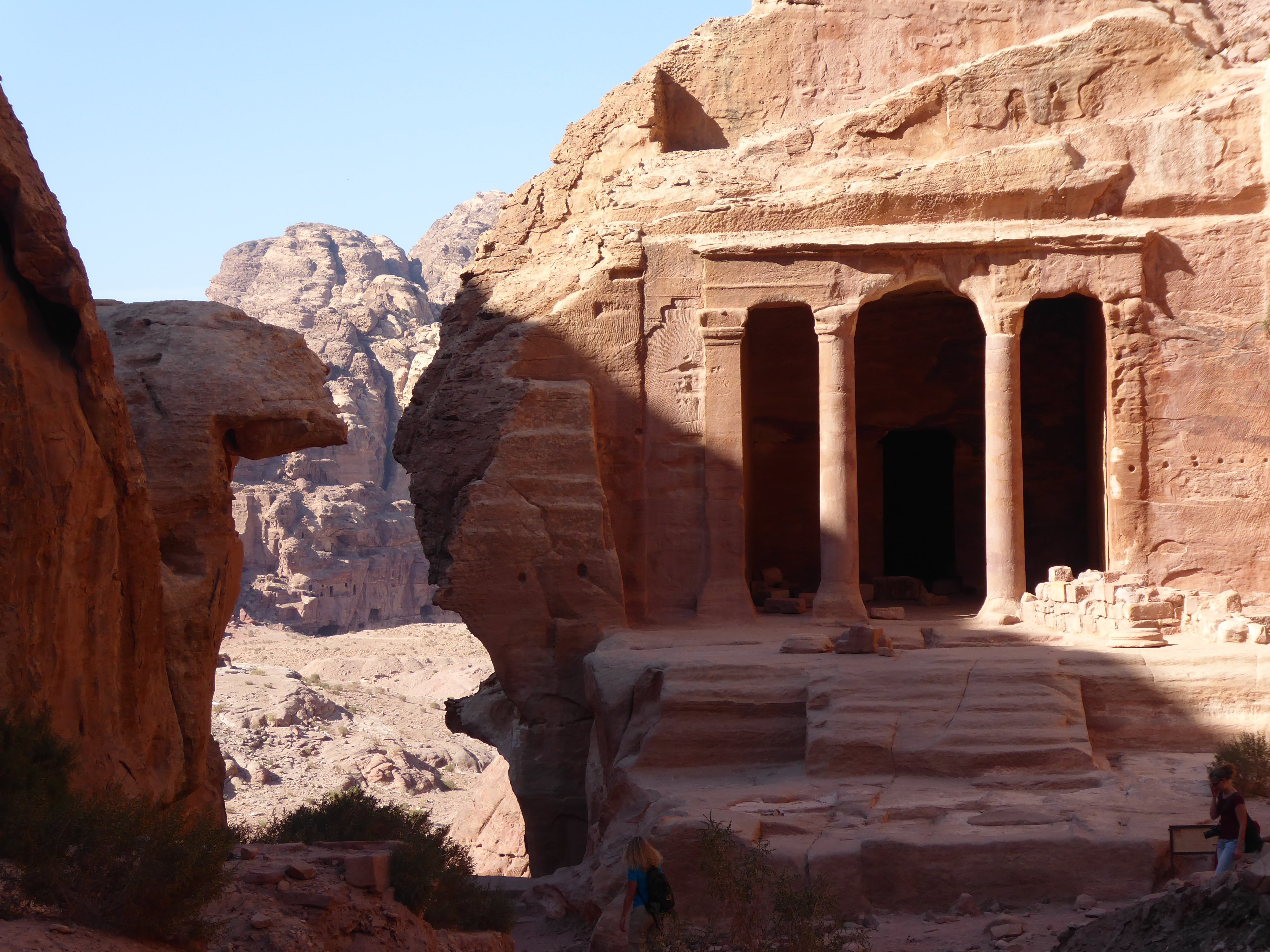
Painted Triclinium
No it’s not painted, aptly called “painted” because the different layers of coloured sandstone from black, mustard yellow, ivory, pink and ranges of red and rusty brown naturally decorate the inside of this banquet hall. Lots of tombs, “houses” and rocks everywhere within the area display this type of natural decoration like an earthly rainbow embedded within the stone.

Roman Soldiers Tomb
This got its name from the three Roman status adorning the outside of this tomb. Inside it is quite big, bigger than many of the standard size tombs and I wondered just how it would have looked when those who were buried inside were laid to rest. If it was only for three soldiers it is very big, maybe they were high-ranking soldiers or a family of soldiers like father and sons, we will never know.


Was the climb up the stairs enjoyable, no, not difficult but I had a pain like a pin sticking into the side of my knee, great views though. The mountain top is one of the highest points in the area, maybe the highest which why I guess the Nabataeans chose it as a sacred area – I would later find out and see that on top of many mountains there is an altar; this one is one of the biggest, could be the biggest.

High Place of Sacrifice
Was storage and management is everywhere in Petra, you don’t have to look hard to see gutters and water channels throughout the area along with square and rectangular cisterns cut into the rock at the top of every mountain. I tried to follow the gutters, but a combination of earthquakes and natural erosion makes this impossible. It would be incredible to map out the water systems across the area as it was back in the day, we may be impressed now but I bet we totally underestimate the extent it was and how sophisticated too. Like with the pyramids being understated because of today’s instant gratification lifestyle, the Nabataeans understood the land, seasons and water as well as if not better than any professionals of today.

The altar is the highest part, a channel cut from the altar platform runs into the cistern, so I guess whatever they sacrifice would in turn run through the whole area therefore blessing the entire area. A combination of complexity, magnitude and quantity of archaeology coupled with erosion makes the High Place of Sacrifice difficult to decipher. It is such a shame, an astonishingly complex, large (between 20-30 000 population) and advanced civilisation that we know so little about with so much evidence right in front of us, so bloody frustrating and yet so tantalising you cannot help your imagination running away.
My day was almost done, back down the other side of the mountain, (cutting the High Place of Sacrifice Trail in half, you go down loads more stairs to end up back in the main valley by the Street of Facades. By the time I got back to Petra’s entrance I was tired, the lift back to my lodgings with Issaam was like winning a prize and while driving past other people walking back up the hill I just had to sympathise with them…with a little smirk on my face.
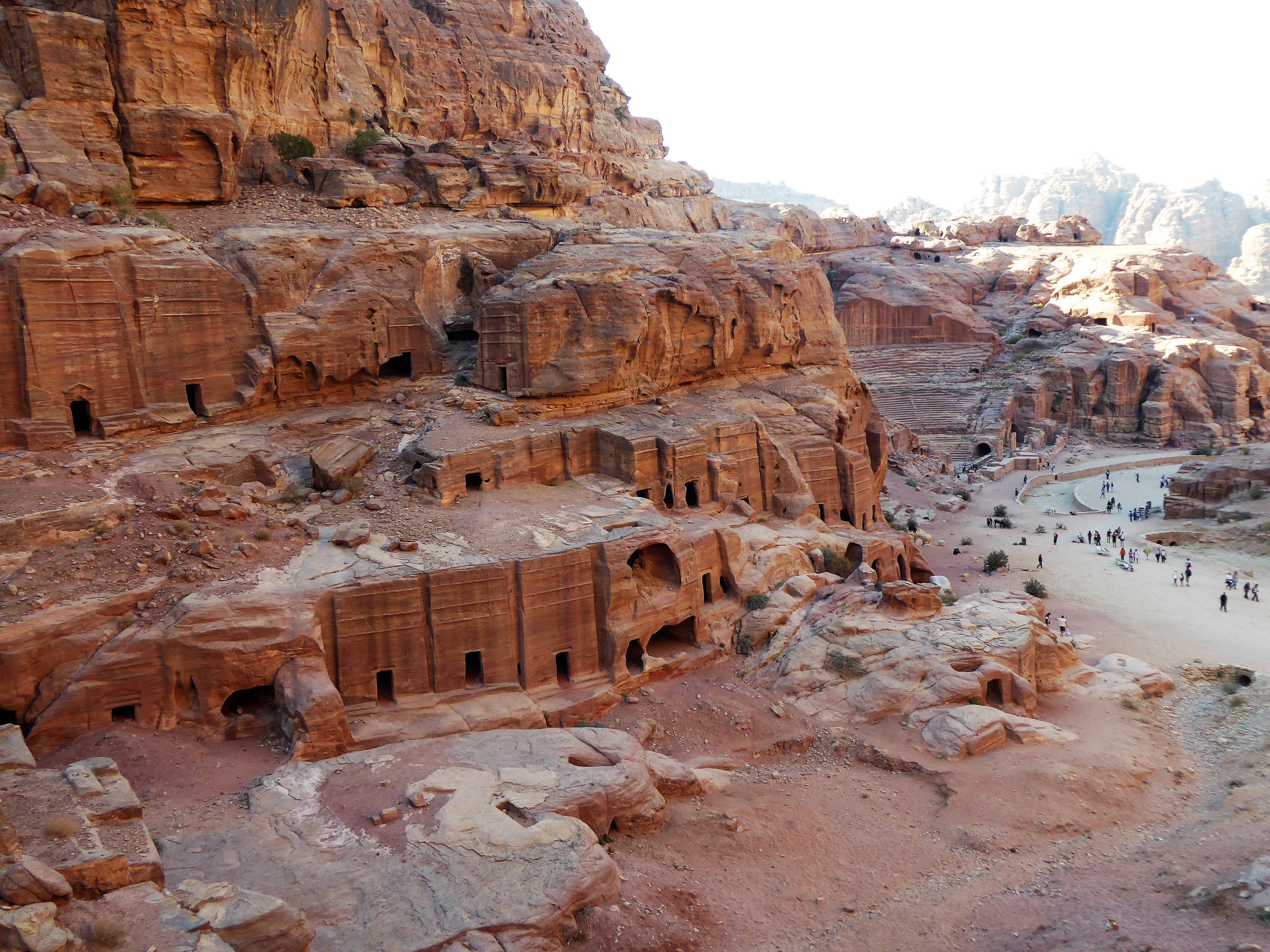
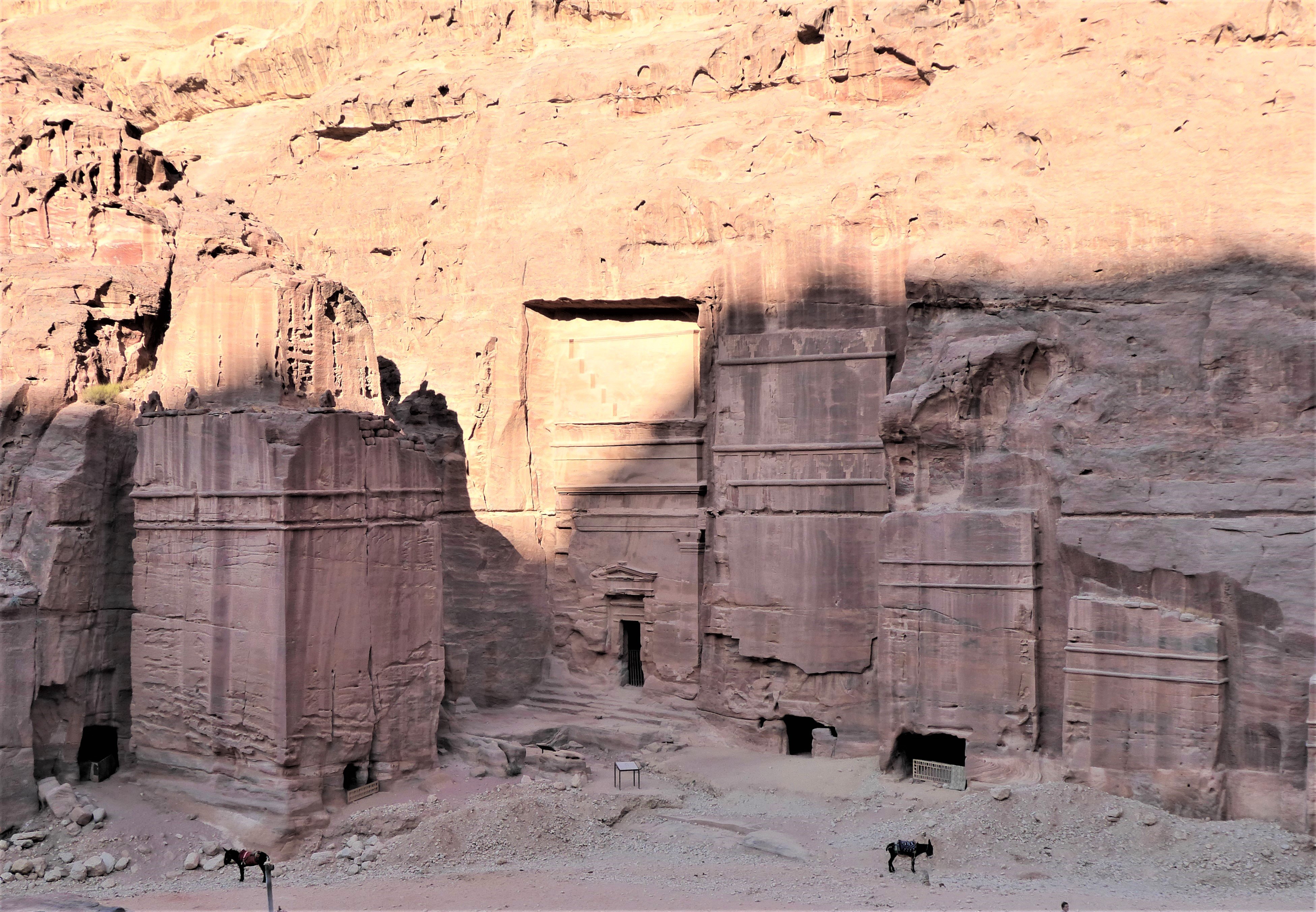
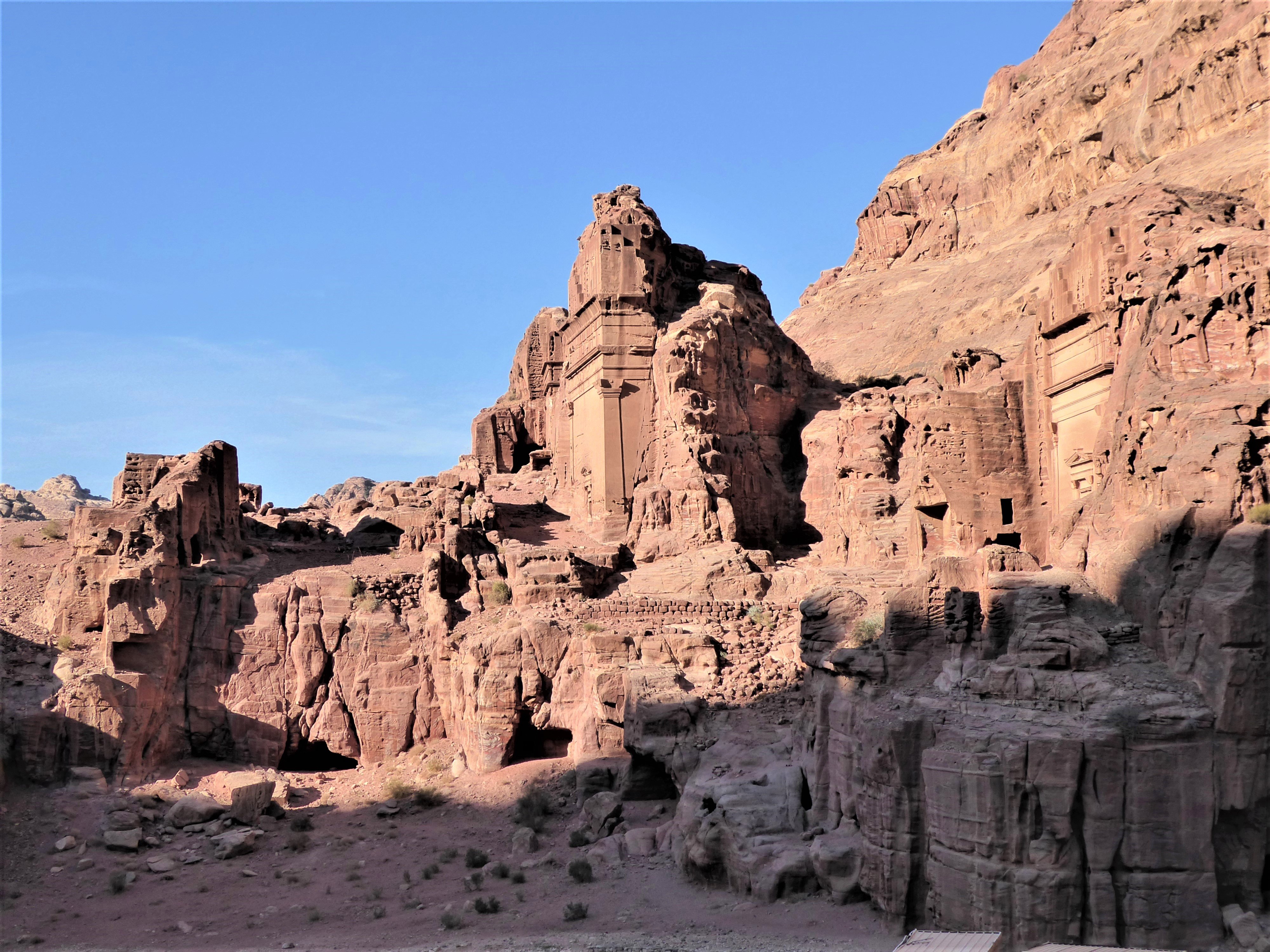
Part 2 done and there is more to come, Part 3 I hope to have less writing and more pictures, lets’ see how it goes. If you missed it, here is the link to Part 1 or you can go to the final instalment Part 3
Here are some additional pictures from the day

